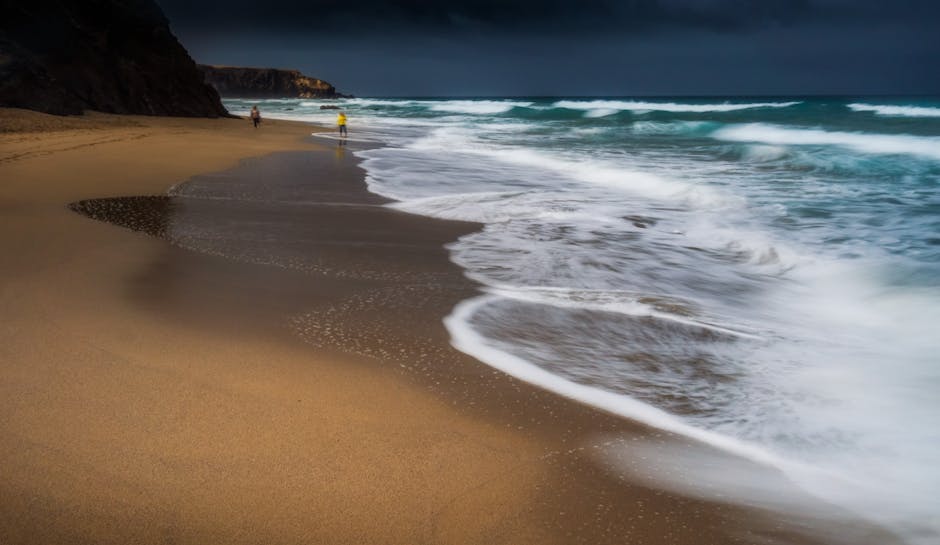How to Create Realistic Weather Scenarios
When it comes to creating immersive and engaging environments in various forms of media, realistic weather scenarios play a crucial role in setting the tone and enhancing the overall experience. Whether it’s a video game, a film, a novel, or a virtual simulation, the weather can add depth, emotion, and challenge to the narrative. But how do creators achieve this level of realism in their weather scenarios? What goes into crafting the perfect storm or a serene sunny day? In this comprehensive guide, we will delve into the intricacies of creating realistic weather scenarios, exploring the techniques, tools, and considerations that go into making weather come to life.
The Science Behind Weather

Before diving into the creative process of crafting weather scenarios, it’s essential to understand the basics of weather phenomena. Weather is the state of the atmosphere at a particular place and time, determined by factors such as temperature, humidity, air pressure, wind, and precipitation. Meteorologists use sophisticated tools and models to predict and analyze weather patterns, allowing them to make accurate forecasts.
Research and Observation

Creating realistic weather scenarios starts with research and observation. Whether you’re designing a game level set in a snowy mountain range or writing a scene where characters are caught in a thunderstorm, it’s crucial to study real-world weather conditions and how they impact the environment and people. Visit weather websites, read books on meteorology, and watch documentaries to gain insights into different weather phenomena.
Utilizing Technology

Advancements in technology have made it easier for creators to simulate and depict realistic weather scenarios. Weather simulation software allows developers to generate dynamic weather systems that evolve in real-time, reacting to player actions or story progression. These tools provide a high level of customization, enabling creators to control parameters such as cloud cover, precipitation intensity, and wind speed.
Creating Atmosphere

Weather plays a vital role in setting the atmosphere and mood of a scene. For example, a dark and stormy night can create a sense of tension and foreboding, while a bright and sunny day can evoke feelings of joy and tranquility. When designing weather scenarios, consider how different weather conditions can enhance the emotional impact of your narrative and engage the audience on a deeper level.
Challenges and Realism
While realistic weather scenarios can elevate the immersion of a story or game, they also present challenges to creators. Achieving a balance between realism and gameplay or narrative requirements is essential. For example, a game set in a post-apocalyptic world may feature exaggerated weather events for dramatic effect, deviating from strict realism for the sake of storytelling.
Accessibility and Inclusivity
When creating weather scenarios, it’s essential to consider accessibility and inclusivity. Not all players or audience members may have the same experience or comfort level with certain weather conditions. Providing options for adjusting weather settings or including diverse weather patterns can cater to a broader range of preferences and needs.
Impact on Gameplay
Weather can have a significant impact on gameplay mechanics and strategies. For example, a racing game with dynamic weather conditions may require players to adjust their driving techniques based on factors like slippery roads or reduced visibility. Incorporating weather challenges can add depth and variety to gameplay, keeping players engaged and challenged.
Future Trends and Innovations
As technology continues to advance, we can expect to see more sophisticated weather simulation systems in various forms of media. Virtual reality experiences with realistic weather effects, interactive storytelling with dynamic weather events, and AI-driven weather systems are just a few examples of future trends in weather simulation. Creators are constantly pushing the boundaries of what is possible, aiming to create more immersive and engaging weather scenarios.
Expert Opinions
According to renowned game designer, Jane Smith, “Weather is an integral part of world-building in games. By incorporating realistic weather scenarios, developers can create environments that feel alive and dynamic, enhancing the player’s experience.” Experts in various fields agree that weather plays a crucial role in storytelling and immersion, emphasizing the importance of attention to detail and authenticity.
Conclusion
To wrap things up, creating realistic weather scenarios requires a combination of research, observation, technology, creativity, and attention to detail. By understanding the science behind weather, utilizing advanced tools, and considering the impact of weather on atmosphere and gameplay, creators can craft immersive and engaging experiences that resonate with audiences. As technology continues to evolve, we can expect to see even more realistic weather scenarios in the future, enriching storytelling and world-building in various forms of media.
Next time you find yourself caught in a virtual storm or basking in the warmth of a digital sun, take a moment to appreciate the artistry and skill that goes into creating these realistic weather scenarios. Weather may be unpredictable in the real world, but in the realm of storytelling and entertainment, it can be crafted and controlled to evoke a wide range of emotions and experiences.




